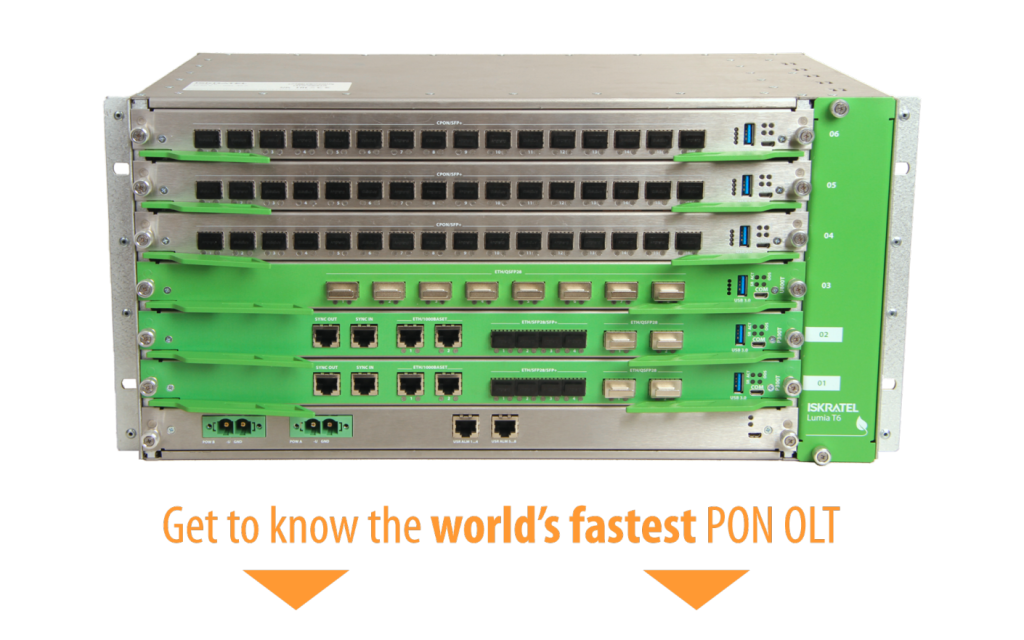Deploying the right fibre-access technology to unlock a more sustainable future
by Tomo Bogataj, Head of Broadband Marketing, Kontron
From ambitious targets to new regulations and national pledges, there is no ignoring the increased importance being placed on operators to create a more sustainable world, especially from the European Union (EU). In December 2020, the EU updated its target to reduce emissions by at least 55 percent by 2030. This aligns with the ambitious national climate targets of EU member states; Germany, for example, aims to become greenhouse gas neutral by 2045.
While telecom operators may be inclined to prioritise profits and efficiency, the environmental impact of their solutions must be weighed up carefully before they fully deploy any fibre-access technology. With energy consumption having a direct impact on the environment, operators should be turning to initiatives and technology choices that significantly reduce the amount of carbon emissions released into the atmosphere in order to reduce their carbon footprints.
Utilising the right technology for the environment
When looking at broadband-access technologies from the perspective of power consumption, it is evident that the subsequent emissions of CO2 are a result of a mix of fossil fuels and renewable energy sources to generate electricity, as shown in Iskratel’s recently published ‘FTTH: A Catalyst for Sustainable Action’ whitepaper.
Unsurprisingly, the analysis shows that copper-based access technologies are heavy on CO2 emissions. The worst is HFC with DOCSIS 3.0, which consumes around 2.3 W per individual user (connected with 50 Mb/s) if fully utilised. In fact, a million HFC users generate an astonishing 8,000 metric tonnes of CO2 per year, which is equal to putting more than 3,000 emission-heavy cars on the road. In comparison, VDSL performs around 20% better than HFC, with an average consumption of 1.8 W per user – but this may be several times higher in rural areas.
FTTH technologies, on the other hand, yielded some surprising results. While fibre-access technologies are generally considered better than their copper counterparts, point-to-point FTTH was disclosed to be heavy on emissions, and even worse than VDSL. The average consumption is 2.2 W per user and may be as high as 2.5 W per user in rural areas. Subsequently, P2P FTTH generates around 7,700 tonnes of CO2 for a million users in Germany per annum.
In fact, GPON and XGS-PON FTTH are shown to perform superiorly. When fully utilised, GPON requires only 0.12 W per user. The carbon footprint of a million GPON users is 420 tonnes of CO2 per year, up to 20 times less than HFC, VDSL2 or P2P FTTH. When comparing FTTH technologies alone, the figures reveal PON technology as the most optimal choice for reducing carbon impact.

What impact does this have on sustainability?
In Germany, the majority of existing broadband connections are still reliant on copper, with 8.7 million HFC users and 16.8 million VDSL users. Their carbon footprint in 2020 was around 95,000 tonnes of CO2; if every HFC and VDSL user in Germany leveraged GPON in its place, they would have generated just 5,000 tonnes of CO2. Not only is this a significant reduction on carbon emissions, but it would also significantly help the German Government achieve its national sustainability targets.
Predictions estimate that there will be a rapid growth of FTTH adoption in Germany in the near future, with a predicted 25 million active FTTH connections by 2026, an increase of 23 million from current figures. Assuming the average connection speed of 250 Mb/s, the emissions for these new 23 million users will be around 3,500 tonnes of CO2 in 2026 if connected with GPON or XGS-PON – or a staggering 123,500 tonnes with gigabit P2P FTTH. This difference alone would require additional 12,000 hectares of woodland to neutralise the emissions.
As the environmental impact will vary considerably depending on the choice of fibre-access technology, selecting PON technologies over P2P is the ideal choice if operators wish to make their operations more sustainable.
What operators need to consider
There is still a long way to go when it comes to leveraging the most sustainable technologies. While governments and regulators in EU member states might be mindful of the carbon intensity of copper-based broadband access, operators may not be fully aware of their chosen FTTH technology’s overall impact. When migrating their business strategies from copper- to fibre-based access technologies, operators have an increasing obligation to make sure they have considered this, and to make the right choice from the fibre menu.
As a collective, the industry must not only focus on adopting the most cost-effective and efficient technologies, but also those that are the most environmentally friendly, as the telecommunications industry increasingly shifts its focus to fibre-access alternatives.
To read more on the full comparisons of broadband-access technologies, and FTTH in particular, download Iskratel’s new ‘FTTH: A Catalyst for Sustainable Action’ whitepaper.
Related articles

Unlocking invaluable benefits for fibre rollouts with interoperability
Learn more
Maintaining CPE Sustainability Every Step of the Way
Learn more
Investing in the right equipment vendor can unlock your network deployment
Learn more






